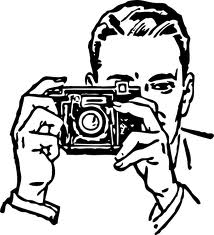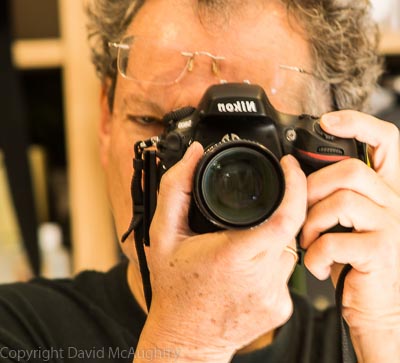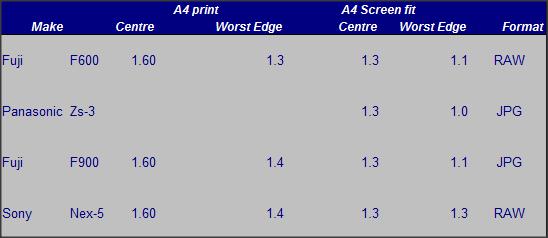On Portability – Cameras Part 5: Resolution tests
 Gird yourself here, this post is extra-wonky. Alternatively, you can brace yourself. As you may know from reading the prior few posts, the camera I favour at the moment is the excellent little Fuji F600EXR. While a whizz in the specs department and in it’s underlying technology, there has always been a whiff of controversy about the crispness of its lens. This has bugged me ever since I read about it, so I determined to find for myself what the actual lens sharpness of my own camera was. In doing so I wanted to compare the lenses of this camera to my other current Fuji the Z900EXR, the Panasonic Zs-3, with its excellent Leica lens, and my APSC Sony Nex-5 with the 18-55mm lens (which retails at about £300 for the lens alone).
Gird yourself here, this post is extra-wonky. Alternatively, you can brace yourself. As you may know from reading the prior few posts, the camera I favour at the moment is the excellent little Fuji F600EXR. While a whizz in the specs department and in it’s underlying technology, there has always been a whiff of controversy about the crispness of its lens. This has bugged me ever since I read about it, so I determined to find for myself what the actual lens sharpness of my own camera was. In doing so I wanted to compare the lenses of this camera to my other current Fuji the Z900EXR, the Panasonic Zs-3, with its excellent Leica lens, and my APSC Sony Nex-5 with the 18-55mm lens (which retails at about £300 for the lens alone).
To do this testing I used the method suggested by the estimable Bob Atkins in his comprehensive and highly recommended web site. If you need refreshing, or plain don’t know about a key piece of photo technology – this is a really useful port of call. Bob’s method is pretty exacting, and similar to that done by major labs. The reason to do it yourself is that all individual cameras differ – and this was particularly true of the early F550 EXR cameras from Fuji. The approach used is to take a standard shot from a fixed distance of a set of special test images, as shown on the left. These images contain sets of parallel lines, at progressively greater numbers of lines per mm. A set of three images are laid out over a white 15″x22″ background background as shown below, and the camera focal length is set so the test images cover the full frame. I used a tripod, and as it has been p*ssing it down for the last month, I shot them indoors with flash.
really useful port of call. Bob’s method is pretty exacting, and similar to that done by major labs. The reason to do it yourself is that all individual cameras differ – and this was particularly true of the early F550 EXR cameras from Fuji. The approach used is to take a standard shot from a fixed distance of a set of special test images, as shown on the left. These images contain sets of parallel lines, at progressively greater numbers of lines per mm. A set of three images are laid out over a white 15″x22″ background background as shown below, and the camera focal length is set so the test images cover the full frame. I used a tripod, and as it has been p*ssing it down for the last month, I shot them indoors with flash.
 As you can see the individual lines in the shot above are pretty tiny when shot in a layout as on the left from 6 feet away. The test results are found by looking at the resulting image at 100% and determining which is the finest set of parallel lines that can be be distinguished for a particular camera. For example, the 1.25/mm group of lines can be clearly seen in the test card above, but not much smaller than that. So now here are the test results. The first chart shows the smallest lines that can be resolved for the centre of the shot, and then the best resolving edge and the worst resolving edge. The bigger the number (of lines/mm) the better the result. I did no sharpening or enhancement of the resulting shots by the way, so these results represent the cameras themselves, not afterprocessing effects.
As you can see the individual lines in the shot above are pretty tiny when shot in a layout as on the left from 6 feet away. The test results are found by looking at the resulting image at 100% and determining which is the finest set of parallel lines that can be be distinguished for a particular camera. For example, the 1.25/mm group of lines can be clearly seen in the test card above, but not much smaller than that. So now here are the test results. The first chart shows the smallest lines that can be resolved for the centre of the shot, and then the best resolving edge and the worst resolving edge. The bigger the number (of lines/mm) the better the result. I did no sharpening or enhancement of the resulting shots by the way, so these results represent the cameras themselves, not afterprocessing effects.
OK, so what does this tell us? Firstly, in RAW, the Fuji F600 is right there with the Panasonic in centre sharpness, but both are a long way off the Sony. At the edges the Panasonic maintains it’s sharpness very well, but the F600 loses a bit of sharpness. The F900 maintains it’s centre to edge sharpness pretty well, and the Sony is again miles ahead. So overall, the Sony is excellent centre to edge, the Panasonic is also excellent, the F600 is excellent at the centre but is a bit soft at the edges, and the Z900 is pretty consistent across the frame, but a wee bit softer than the Panasonic. So at this level, it’s true, the Fuji F600 lens is not so good at the edges as the leading travel zoom lens. The Fuji’s results shown are at the 8Mpx resolution by the way, but I also tested at the full 16Mpx (didn’t make much difference). The shots were all taken reasonably well into the focal range and a stop or two down from wide open so they were not at their worst settings (widest angle setting and wide open aperture is usually going to give some softness no matter how good the lens – see later).
Since we know the magnification, and the size of the sensor let’s look at what the sensor is achieving here – remember, the Fuji’s and the Pansonic’s sensors are tiny by comparison with the Sony’s.
OK, so what we are looking at above is the number of lines resolved per mm by the sensor. You can see from the ‘centre’ and ‘worst edge’ numbers, that the compact cameras are resolving an incredible amount at the sensor level – between 130 and 190 lines/mm. Quite amazing. The Sony has to work much less hard to achieve it’s sharpness, getting only 60-70 lines. By the way, the very best DX or FX lenses and sensors can resolve up to 80 lines per mm. But that is at pro level with Summicron-quality lenses.
So all is lost then? A good big’un has been shown to beat the good little’un so do we have to trundle cameras and lenses of the size of the Sony and up to get good shots? Well possibly not. The next test I did was to see how these tests worked at the original – full size. My working PC screen is a 24″ Dell2408WFP screen running at 1920×1280 resolution (or around 90 pixels/inch). It was the d*g’s b*ll*cks in large screens 4 years ago, and is still highly rated. I ran the same test as above on the full frame photos displayed at A4 size (rounded to 12″ by 8″) on that screen. While this is as large as will be shown on the web, the lower resolution of PC LCD screens (at the moment anyway) means the resolution will always be lower. Printers operate at a much higher resolution – between 240 and 300 pixels per inch. At a normal viewing distance, 240 pixels per inch is the highest amount the human eye can resolve, and that’s probably why it is the default print output resolution for Lightroom. So I also did the test on an A4 print on high quality paper at 240 pixels per inch. Here are the results.
At practical sizes – there is essentially no difference between the resolvable sharpness of the cameras. Whether on an A4 print or on a screen, all the cameras are equally as sharp at the centre, and within a whisker of each other at the edges. And this applies to anything likely to be commercially printed except for large format art books and exhibition and advertising prints. When was the last time you saw a 12″x8″ photo in the National Geographic for example? If the small difference in edge sharpness of the compacts bothers you, shoot a little bit wider, and crop 15% or so off the edge. Then there will be no difference at all.
I had always somehow suspected this. Whenever you read the forum chatter about sharpness, the proponents of one side or another always have to look at the 1:1 (i.e individual pixel level) display of the full-sized shot before they can detect the difference. But no-one except advertising professionals and exhibition photographers ever uses this resolution. I have always had the feeling that the technology arms race in cameras was like the insane levels of supposed audio resolution in top-end hi-fi systems – where the quality of resistance in the mains cable is alleged to affect the stereo image. Get out of here! For bats maybe – not for humans.
So what does this mean? Well I don’t know about you, but for me this says that for the photographs I am going to take and show or print, I don’t generally need the full resolution offered by the fancier and bigger cameras. I can capture the image of the moment with the camera I have in my hand, pretty confident that I have got an image as good as it needs to be for all my purposes. I regularly run prints as large as 20″x12″ from my Z900, with excellent sharpness edge to edge. Of course if more resolution is offered, I’ll take it – so as compact cameras improve over time, I’ll be buying the upgrades. And when I have time to prepare, and I can carry the equipment, I’ll use the big’un. Nature shots in the gardens or close to home for example, I’ll use the big’un. But on the move and on the trek – it’s still going to be the little’un.
OK, there is one more part of this post to do – an examination of all these cameras at their worst, with wide open lenses, and wide open apertures. I did this because I recently took a shot in London with the F600, lens wide open and at the widest aperture, and it was visibly soft at the edges. Actually this was the first shot I had noticed like this, and I went back and checked out all the others without seeing the same effect. Because of course on every other image the lens was zoomed in a bit and the aperture was closed down a stop or two. Hmm I thought – maybe not as good as I thought. Wonder what the other three cameras look like?
Given that the real-world photo resolution tests above were more interesting than the 1:1 line resolution tests (which are also very time consuming), I did a test as done by many of the camera reviewers, of a row of books on a bookshelf. Again all the cameras were tripod mounted, and the photos were taken with flash. The different brightnesses are due to the different flash strengths by the way. I then took a crop of the full sized image of the right hand side of the frame. In all cases I adjusted the image size so that the row of books was the same dimensions (8″ from leftmost book to rightmost) in all cases. The shot represents around 2/3rds of the image, with the edge being on the far right i.e the full shots were about 12×8.
You can see the results below (click ‘FS’ in the bottom right hand of the image box to see at full screen size). I have not identified the cameras directly. Now for each image, have a look at the text on the spine of the far right book ‘Quickie – Ledwig’, then look on the next book at ‘Thomas E Ricks’. Then finally have a look at the text in the middle of the shot ‘Nine Dragons’. Which do you like best overall of the four images? You can see which camera is which by clicking on the ‘i’ icon in the top right had corner. I am not sure personally that I have a favorite at full screen. But I can tell you that even under these rather less flattering circumstances I really like the image from the F600. And with the edge cropped off, it’s the best of these I think. By the way,you will also note that the £300 Sony lens is demonstrably soft at the edge. It’s somewhat known for it by the way, but it shows you should not expect miracles from any camera lens except the pro quality ones.
Resolution comparison shots
Finally, here is the photograph that caused me to do this testing. I was walking across Hungerford bridge across to the South bank Centre, and the sun burst out of the previously threatening sky. The light looked interesting, and of course, I had a camera to hand – my little F600. As I was shooting various (unsuccessful) views, a rainbow appeared over St Pauls, set against the lowering sky. The shot I took was with the lens at its widest, and at maximum aperture. As a result the edge of the frame was a bit soft. So I cropped it and got the shot below. I really quite like this photograph, and I am much happier with the shot I got with the camera in my hand, than having the perfect camera at home and missing the moment. As ever, click on the photo to see a larger and better view.
[singlepic id=161 w=800 h=800 float=]
- On Portability – Cameras part 1: Big to small
- On Portability – Cameras part 2: Panasonic, Sony, Nikon
- On Portability – Cameras part 3: Fuji EXR technology
- On Portability – Cameras part 4: Fuji F600 and F900
- On Portability – Cameras Part 5: Resolution tests
- On Portability – Cameras part 6: Canon SX220
- On Portability – Cameras part 7: The one in your hand




